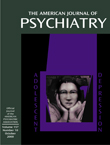Acute Stress Disorder: A Handbook of Theory, Assessment, and Treatment
Acute stress disorder is a new diagnosis, added to DSM-IV in 1994. It differs from posttraumatic stress disorder (PTSD) (introduced in DSM-III in 1980) in that it must be present for at least 2 days after the trauma but not persist for more than 1 month, and it possesses a unique dissociative cluster of symptoms. At least three of the following must be present: numbing, reduced awareness, depersonalization, derealization, and amnesia. Most of the other symptoms of the two conditions overlap. Should the disabling state continue for more than 30 days, a diagnosis of PTSD is in order.
In this very well-written book, carefully documented with citations and references, Drs. Bryant and Harvey, both psychologists, review the theoretical basis of acute stress disorder and explore its power to predict the later onset of PTSD. Certain features do seem predictive, especially numbing, depersonalization, the sense of reliving the experience, and motor restlessness. Vulnerable individuals seem to use punishment as a way of interpreting experiences; they worry more and seem to exaggerate both the probability of future negative events occurring and the adverse effects of these events; and, of course, there may be a genetic predisposition as well. The authors hypothesize that individuals who use adaptive strategies that permit sustained activation of the fear network aroused by the traumatic event and go on to integrate the associated information correctively will benefit from a resolution of transient stress reactions, whether this occurs spontaneously or as a result of treatment.
In a section on patient assessment, we are directed toward ways to recognize and understand the symptoms of acute stress disorder and arrive at a more accurate diagnosis, not only by means of clinical observation but also by employing appropriate psychological testing. A complete evaluation should also include a history of previous traumas, the meaning of the event to the patient, any comorbid conditions, and the patient’s usual coping strategies and social support systems.
It is in the section on cognitive behavior therapy that the authors’ communication skills become apparent. Their description of these therapies is familiar territory, but when they give precise guidelines and relate examples of dialogue between therapist and patient, the material truly comes alive. I have seldom read such clear and helpful illustrations of these techniques in vivo, so to speak.
Being a writer and editor myself, I would have suggested some changes that would have made the information more accessible, not the least of which would be the use of detailed summaries in the front of each chapter to highlight the main points and conclusions to be drawn from the material to follow. I would also have made it more apparent, in the introduction and even in the subtitle, that the treatment sections deal only with cognitive behavior therapy and that psychopharmacological approaches, which have serious merit, would not be included.
I found the final chapters quite intriguing. A discussion of the widespread practice of debriefing or crisis intervention calls attention to the real limitations of such methods in the prevention of serious, long-term psychological disturbances, as well as possible negative consequences of their indiscriminate use. Quite unexpectedly, the book ends with a very interesting exploration of the legal ramifications of acute stress disorder and PTSD.
When I was 22 years old, I was in a sailing accident in the Caribbean. I spent 14 hours in the pitch black night being pulled along in an offshore current, only the half-submerged shell of the small boat protecting me from drowning or being devoured by sharks. I still remember how helpless and afraid I felt. I can still remember being rescued the next morning by a passing freighter. And then I did what I suppose a lot of people do: thanked God I was alive and pushed my anguish out of mind. Numbness and reduced awareness, restlessness, insomnia, hypervigilance, and concentration difficulties would plague me for years, never enough to seek help but subtly keeping me from reaching my full potential. Later on in life, another traumatic event brought me into a therapeutic situation that finally resolved the consequences of that night.
It is really too bad that diagnoses like acute stress disorder and PTSD—and their treatments—were not around in those days. But who is to say. If you believe in some kind of personal destiny, and I do, perhaps that is what was meant to be. Perhaps I am a better psychiatrist and a more mature person for having gone through a severe trauma and ultimately put it to rest.



